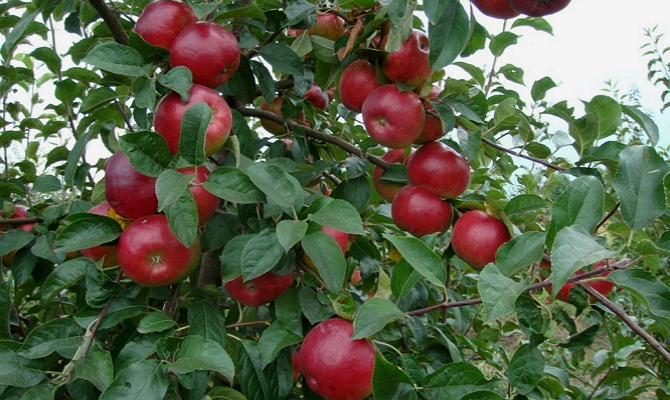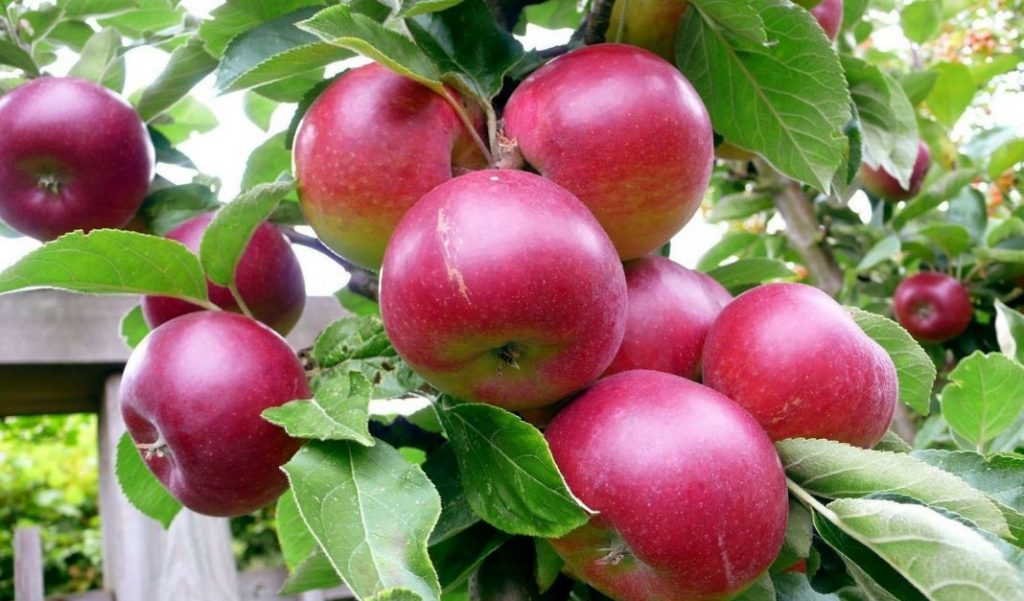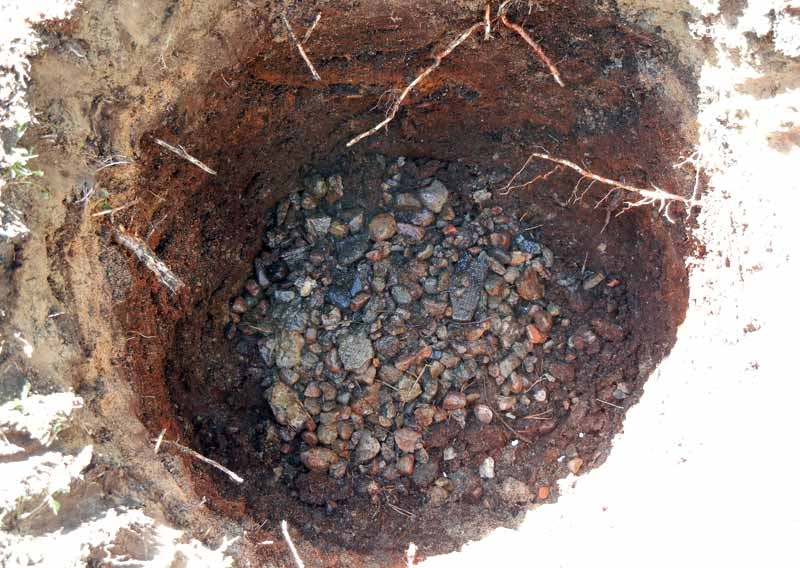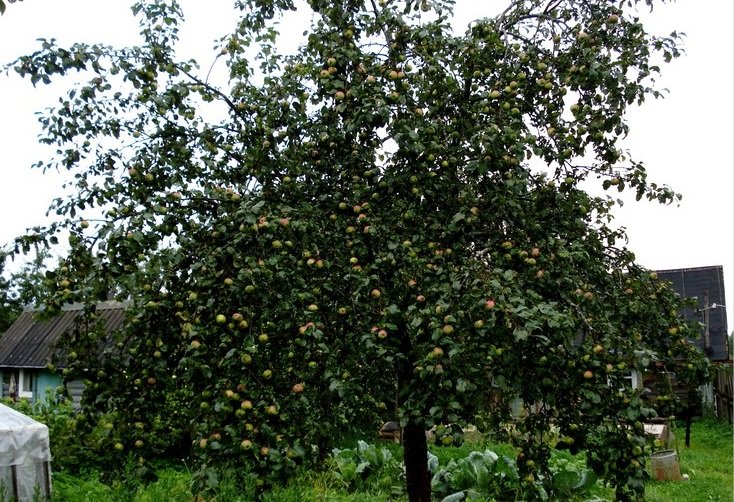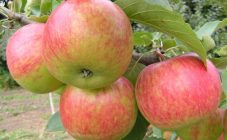Content:
Probably, you cannot find a more common fruit in Russia than an apple. Given the climatic features of our country, this is not surprising. Apple trees are grown by many domestic gardeners. There are a number of varieties that gardeners prefer. These include the Borovinka apple tree.
History of creation
The Borovinka variety was first described at the beginning of the 19th century by the scientist Rytov. He wrote that this variety is not tasty enough and equated it with the Antonovka variety. Around the same time period, the North American people liked the variety, they began to plant the crop in their gardens and gave the variety the name Oldenburgsky.
Years later, the Borovik apple tree spread throughout Europe. She began to appear in our country. Over the years, the apple variety was known under different names: Bravina, Borovitsky, Naliv Kharlamova, Kharlamovka, etc.
Remarkably, during the entire existence of the variety, its origin has not been established for certain.
Description of the variety
Borovinka is grown in most Russian regions. This is a fairly tall tree that can grow up to 4.5 meters. It is characterized by a thin crown of about 5.5 meters in diameter of a loose oval shape. The branches are smooth, brown in color. The leaves of the apple tree are glossy, dark green, located at right angles to the shoot.
The apple petioles of this variety are thin, dark crimson in color. Flowering culture is abundant. The plant blooms with white inflorescences with an insignificant pink tint of medium size.
Apples grow in weight from 90 to 200 grams, with a regular round shape. The fruits themselves are light green or light yellow, with a red tint on the sides.
The fruit tastes sweet and sour. They can be eaten both fresh and processed. Borovinka is perfect for making juices, making jam, compotes.
The fruits are keeping quality, they tolerate transportation well. They can be stored until about mid-winter without any problems.
Ripening of apples occurs in late summer or early autumn, depending on the region of planting.
Borovinka is in fairly high demand, both in the northern regions and in the southern regions. The tree begins to actively bear fruit about the fourth year of the plant's life and gives a good harvest up to ten years. Every year the yield indicator increases and reaches its peak in the period from 23 to 30 years, when, subject to agricultural technology, up to 200 kg of fruit can be harvested.
When planting Borovinka in the garden, it should be understood that this is not a pineapple variety, and a red spot on the peel does not mean at all that the apple will be very sweet. The fruit contains a small amount of sugar and a lot of ascorbic acid. This means that Borovinka is a sour variety.
Despite this, the apple variety is highly regarded by gardeners. One of the reasons for this is the high rate of winter hardiness. This allows the variety to be cultivated over a wide geographic and climatic range.
Agrotechnics
According to the description, the Borovinka apple variety is quite easy to care for. Its landing is also not difficult.
Saplings are allowed to be planted both in spring and autumn.The tree develops especially well on a mixture of sandy loam, floodplain and loamy soils. In this case, the variety requires planting a pollinator. The best pollinator is Antonovka vulgaris or Cinnamon striped.
Landing features
Usually Borovinka is planted with seedlings or seeds. The only difference between these two methods is that trees planted with seeds can then be used for rootstock. In general, growing an apple tree by seed is a quite feasible task, but not always expedient. In this case, it will be impossible to guess how the fruits will taste in the end. It also takes a lot of patience to taste the fruit.
Ready-made seedlings are usually planted when they reach two years old. This is the most suitable age for the tree. It will take root perfectly and begin to bear fruit on time. On sale you can find seedlings, both with open and closed root systems. The first is especially important to plant as early as possible.
When planting a culture in spring, it is recommended to prepare a pit in advance - in the fall. When planting apple trees in the fall, preparatory work should begin at least a month before the start of frost. This time will be enough for the fertilizers poured into the pit to create the necessary microflora and acquire a consistency suitable for planting a tree.
To plant an apple tree, you need to find a well-lit place. But at the same time, care should be taken to ensure that the plant is not constantly exposed to direct sunlight. This is fraught with burns.
Despite the fact that the Borovinka variety is very favorable to humidity, the plant does not take root in an overly swampy area. The earth must be air permeable and low acid. If the soil is too clayey, it is allowed to add a small amount of sand to it.
The hole must be dug in a diameter of twice the root system of the seedling. It is necessary to provide a drainage layer in it so that there is no stagnation of water. Small stones, pebbles or crushed stone are optimal as drainage. Some gardeners use broken bricks.
The pit should be much larger than the root system so that the roots can grow freely, both in depth and in width.
In some cases, a stick is driven into the middle of the pit for stability and only then a seedling is planted.
Care features
Like any other fruit tree, the apple tree must be properly cared for. It is especially important to water the plant regularly. If the summer is rainy, the apple tree needs at least 4-5 full waterings for normal growth.
Pruning is usually done in spring or fall. In the spring, it is very important to have time to complete the trimming work before the kidneys swell. Damaged, diseased and frozen branches are subject to pruning. At the same time, the formation of the crown is performed. To give the crown an optimal shape, several strong branches are usually chosen that do not intertwine, and they are slightly shortened. The remaining branches are cut off. With subsequent pruning, crooked shoots and shoots reaching the trunk are removed. Fresh cuts, if they are large enough, are recommended to be treated with garden varnish. This will prevent the penetration of infections.
The storage of the harvested crop should be carried out at a temperature of +1 C and a humidity of about 95%. You need to lay the crop in wooden or cardboard boxes in neat rows, down with the stalks, sprinkling the layers with sawdust. Some gardeners wrap each fruit in paper or newspaper. Proper storage will prevent apples from losing their beauty and taste over a long period of time.
Advantages and disadvantages
The main characteristic of the Borovinka variety is its unpretentiousness. This variety easily takes root in various natural conditions and climatic zones. The main difference lies only in the nuances of care and the timing of apple ripening.
Another undoubted advantage of the variety is its incredible fertility. The culture begins to bear fruit relatively early and does this for a long time, every year only increasing its own yield.
Apple-tree Borovinka perfectly tolerates large temperature drops.
About 90% of apples have an excellent presentation.
Finally, another significant advantage of the described variety is its high resistance to almost all known harmful insects and diseases. The only exception is scab. But if you make timely prevention and regularly treat the apple orchard with fungicides, it will not be difficult to cope with the problem.
There are also some disadvantages of the variety. So, although the Borovinka variety is distinguished by high fertility, in any given year it can give a small number of fruits. In this regard, experienced gardeners strongly recommend planting several varieties on their plots at the same time so as not to be left completely without apples.
Some people don't like its high acidity in the variety. But this is not really a drawback, but rather a matter of taste. So it can only be called a minus of the variety with a stretch.
It is worth noting the fact that when grown in arid conditions, with a lack of watering, the apple tree can begin to shed fruits even before they have time to ripen. You can cope with the problem by increasing the number of waterings.
Summarizing the above, it should be noted that, despite the ambiguous attitude of gardeners to the taste of Borovinka, she is often planted for sale. The variety is widely used in any form. In general, we are talking about excellent apples, which will be a good solution to plant on your site. Anyone, not even a very experienced gardener, will be able to grow such a fruit tree.
